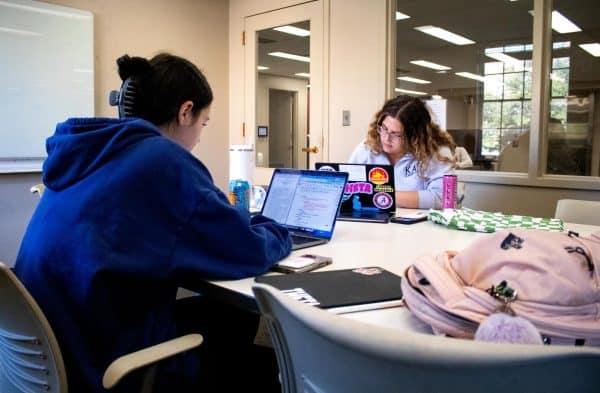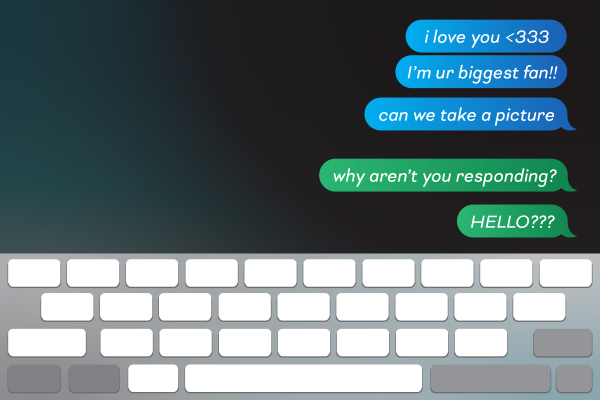Opinion | Are you there? How remote learning is driving more distance between us
When I roll out of my dorm’s XXL twin bed, there’s about five things I check everyday, twice a day. I check GroupMe, which spews hundreds of messages everyday. They’re mostly useless notifications (fraternity group chats, clubs you can’t come to in-person, etc.) but I pick through them for the occasional, vital reminder, such as a mandatory Zoom call or a hard deadline.
I also check my email, my school Gmail, and finally my Blackboard email. Every professor communicates differently during remote learning, and the student is responsible for meeting the unique needs of each instructor. Instead of professors providing information in class, students must actively seek it online. The problem is that the remote nature of online school lessens its importance in the student’s mind, when they should prioritize it more than ever.
“It doesn’t feel like school when it’s online,” said sophomore Natalie McCormick. “So I’m not taking any of my classes seriously.”
Throughout the pandemic, class has seemed to exist in some far-off universe. While responsibilities can feel non-existent, the consequences of evading them are real.
Freshman Rachel Priebe, for example, said she “hasn’t learned anything this semester” and is feeling the effects.
Some schools had lenient spring policies when it came to distanced learning amid a global pandemic. But fall grades weigh as heavily as usual and mark transcripts just as permanently.
The result? In the words of Twenty-One Pilots, many college students are “stressed out.”
Freshman Madison Murry said some common causes of student anxieties are rooted in distance learning and its limited communication.
“It’s hard when you can’t interact and ask questions in real time,” Murry said, speaking on recorded lectures, which are common to exclusively online classes. “I won’t remember questions and be in that same train of thought to ask a question later on.”
Without the encouragement and support of an in-person environment, distance learning can really isolate a student. No one is directly assisting them or assuaging their concerns about a class. Students may attend office hours, but again, they must actively seek them.
Murry also said that for her, online classes caused excessive out-of-class work. She recalled how one 75-minute lecture ended up taking her three hours to distill.
Some students cited time management as their greatest challenge, but online college is a different ball game. Recorded lectures go at the student’s own pace, which makes class easier than ever to neglect. Instead of a set time when a student attends a lecture, the student decides when class starts and ends, a recipe for falling behind.
Time management, among other things, tops the list of student grievances this semester. But what about the people charged with teaching these distanced learners?
Professors are struggling with communication, too. Suzanne Horsley, a professor in the College of Communication and Information Sciences, said that she “spent a lot more time on student communication during the pandemic than in a typical semester. What used to be a quick comment or a handout in class is now a long post on Blackboard or a TL;DR email.”
Speaking of emails, Horsley said she receives hundreds of them. She has to answer 240 students in intro classes, usually individually instead of all at once in a group. This deluge of mail typically follows her own “very detailed emails.”
“For a teacher, it’s very frustrating when you spend a lot of time and energy to write something that many students aren’t reading,” she said.
While students may feel overwhelmed with reaching professors, professors are just as overwhelmed with responding to students. Even though both parties work hard, disconnection taints both of their efforts. Still, Horsley offered some interpersonal advice for moving forward during these turbulent times.
“If we can all remember to practice empathy and understanding, while adding another level of patience, we can get through this together,” she said.











